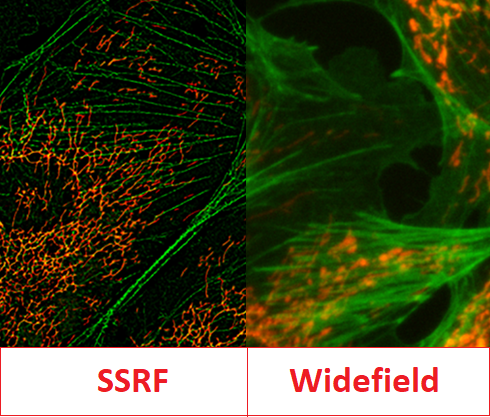Deeper Dive into Multimode Lasers
Multimode vs Single-Mode Lasers for Raman Spectroscopy
Raman spectroscopy is one of the fastest growing and most diverse applications in all of laser spectroscopy. As a result, it can be rather challenging at times to sift through the wide-ranging laser options all being marketed for Raman spectroscopy. In this application note we will tackle one of the most common questions that arises when picking a laser for Raman spectroscopy; “Should I chose a single-spatial mode or multi-spatial mode laser for my application?” On the surface, this seems like a simple question since Raman is a nonlinear optical effect and therefore the tighter the beam can be focused the higher the conversion efficiency. Seemingly a single-mode laser would be preferable, but in practice there are other factors that can complicate the situation.
Read the full article here.
Laser Diode Fundamentals: Beam Properties
For some application such as laser pointers this elliptical beam shape is perfectly fine and as such only a single optic is necessary for culminating the output. This can be accomplished either by utilizing a cylindrical lens which reduces the divergence of the fast axis while allowing the slow axis to pass through unaffected or by using a single aspherical lens. For more advanced applications which require a circular beam cross cylindrical lenses where each lens is chosen to match the numerical aperture of the fast and slow axis can be used as shown in the figure below. While this approach does an excellent job of circularization it often results in a diamond-shaped beam profile due to amplified spontaneous emission, to further improve the beam quality, it is generally preferable to fiber couple the beam and then re-collimate the output. For single mode lasers the fiber acts as a spatial filter resulting in a perfect TEM00 output beam, and in the case of multi-mode lasers, the fiber acts as a homogenizer significantly reducing the hot spots and dark spots. All of the optical configurations discussed previously are used with single emitters, but the same principles can also be applied to multi-emitters where large cylindrical lenses or microlens arrays are often utilized.
Read the full article here.
Machine Vision for Inspection
In the previous blog post on this subject, we discussed that when machine vision is used for the inspection of small parts, laser lines and other shapes are typically achieved through the use of diffractive optical elements, which when used with single mode diode lasers can create a wide variety of geometric shapes and patterns. While these low power single mode lasers are typically sufficient for inspection of small parts on a production line, as the size requirements on the line continue to increase the use of multimode high-power lasers becomes a necessity. As a result, the higher power density becomes an issue for diffractive optics to handle as they are unable to shape multi-spatial mode lasers. As a result, to generate long lines from higher powered multi-mode laser diodes either galvanometric scanning mirrors or micro-optic arrays are required. While scanning mirrors can be somewhat effective at producing uniform laser lines, they suffer from reliability issues, especially in rugged environments, making them a less than ideal solution for deployable field systems. Micro-lens arrays, on the contrary, are a monolithic solution which can either be placed at the output of a fiber-optic cable or directly in front of the diode bar to exploit inherent astigmatism and produce flat top laser lines. In the previous blog, we showed the example of one such flat top laser source, the FocusFlux from Focuslight. It can create a high-power laser line at distances up to 3 meters from the source with fan angles as large as 110-degrees, making them ideal for inspecting larger objects and surfaces.
Read the full article here.
Industry-Leading CW Laser Combiners: Critical for the Life Sciences
 |
Super Resolution Imaging:
- Wavelengths: 405 – 640nm – LPX-640L-300/500 – Red DPSS Low-Noise
- Output power: 300mW – 2W
- Beam Requirements: TEM00 or high power multimode, depending on the setup
|
 |
Optogenetics:
- Wavelengths: 405 – 640 nm range, most popular are 473 – 594nm
- Output power: Typically, low power is needed.
- Beam Requirements: Wavelength combiner useful to cover all the wavelengths needed.
- Multimode Fiber-Coupled Output.
|
Read the full article here.
How Can We Help?
With over 25 years experience providing multimode lasers to researchers and OEM integrators working in various markets and applications, and 1000s of units fielded, we have the experience to ensure you get the right product for the application. Working with RPMC ensures you are getting trusted advice from our knowledgeable and technical staff on a wide range of laser products. RPMC and our manufacturers are willing and able to provide custom solutions for your unique application.
If you have any questions, or if you would like some assistance please Contact Us here. Furthermore, you can email us at info@rpmclasers.com to talk to a knowledgeable Product Manager.
Alternatively, use the filters on this page to assist in narrowing down the selection of multimode lasers for sale. Finally, head to our Knowledge Center with our Lasers 101 page and Blogs, Whitepapers, and FAQ pages for further, in-depth reading.
Finally, check out our Limited Supply – In Stock – Buy Now page: This page contains an ever-changing assortment of various types of new lasers at marked-down/discount prices.
Additional Resources
Blogs:
Whitepapers:
